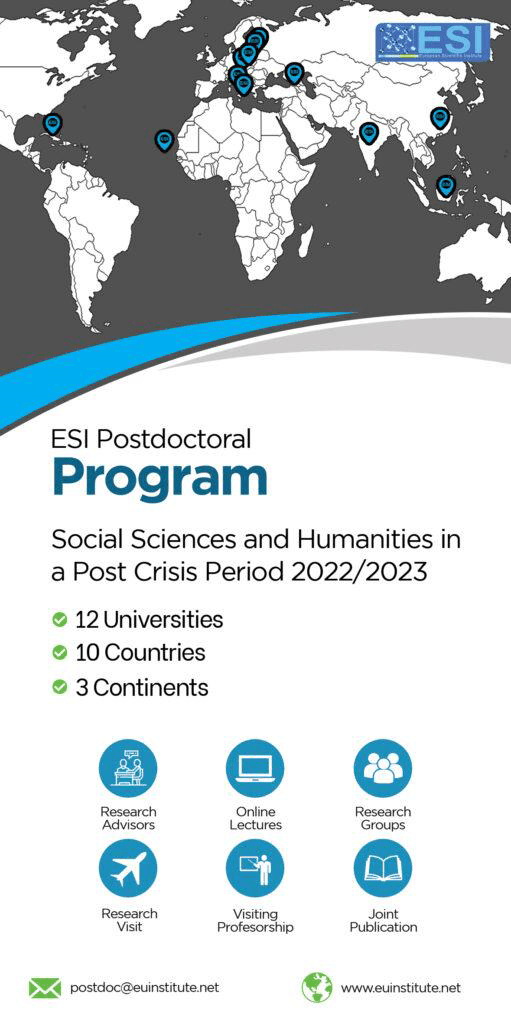Dynamic Evolution of Electric Vehicle Trade Network between China-Europe
Abstract
China and Europe have promoted the development of electric vehicles to reduce carbon emissions and cope with climate change. In recent years, the sales share of Chinese electric vehicle brands in the Europe market has increased rapidly, and Europe has become China's largest export market for electric vehicles. However, the European Union implemented various temporary tariffs on Chinese electric vehicle brands in 2024, which posed a major challenge to the development of the China-Europe electric vehicle trade. Based on the social network analysis, the paper focuses on examining the dynamic evolution of the electric vehicle trade network between China and Europe from 2018-2022. The empirical results indicate a general upward trend in tighter trade groups and increased connectivity efficiency within the network, while the network density and reciprocity display some fluctuations during this period. From a structural perspective, countries that hold central positions in both centrality measures and core-periphery indicators show statistically significant convergence patterns in the electric vehicle trade network between China and Europe. This study has theoretical and practical implications, in highlighting the dynamics changes in the electric vehicle trade network between China-Europe, and providing critical insights for Chinese policymakers and Chinese electric vehicle enterprises to refine their trade strategy and enhance strategic partnerships in European countries.
Downloads
Metrics
References
2. An, H., Zhong, W., Chen, Y., Li, H.,&Gao, X. (2014). Features and evolution of international crude oil trade relationships: A trading based network analysis. Energy, 74(5): 254-259. https://doi.org/10.1016/j.energy.2014.06.095
3. ARC.(2024).EU Implements Tariffs on Chinese Electric Vehicles: Evaluating Impact on Market Dynamics,https://arc-group.com/eu-tariffs-chinese- electric-vehicles/.
4. Boullenois, C., Kratz, A., & Goujon, R. (2023). Opening Salvo: The EU's Electric Vehicle Probe and What Comes Next, https://rhg.com/wp-content/ uploads/ 2023/10/ Opening-Salvo-The-EUs-Electric-Vehicle-Probe-and-What- Comes-Next.pdf.
5. Dadush, U. (2024).Rippling out: Biden's tariffs on Chinese electric vehicles and their impact on Europe, Bruegel, https://www.wita.org/atp-research/ rippling-out.
6. Energy Institute. (2024). 73nd edition Statistical Review of World Energy. https://www.energy.ox.ac.uk/wp-content/uploads/2024/09/ 4.-11.50am-Juliet -Davenport-SLIDES-SR-2024-launch-presentation-AGM.pd df.
7. European Commission. (2024).Commission investigation provisionally concludes that electric vehicle value chains in China benefit from unfair subsidies, https://ec.europa.eu/commission/presscorner/detail/en/ip_24_3231.
8. Hannah, R.(2020). Cars, planes, trains: where do CO₂ emissions from transport come from? 'https://ourworldindata.org/co2-emissions-from-transport.
9. Hu, X., & Pan, J. (2023). Analysis of trade influencing factors and trade potential of China's new energy behicles under carbon emission—Evidence from "Belt and Road" countries. Industrial Engineering and Innovation Management, 6(9):142-152. https://doi.org/10.23977/ieim.2023.060920.
10. IEA. (2023). Global EV Outlook 2023. https://iea.blob.core.windows.net/ assets/ dacf14d2-eabc-498a-8263-9f97fd5dc327/GEVO2023.pdf.
11. IEA. (2024). Global EV Outlook 2024. https://iea.blob.core.windows.net/ assets/ a9e3544b-0b12-4e15-b407-65f5c8ce1b5f/GlobalEVOutlook2024.pdf.
12. IISS. (2024).The EU’s approach to tariffs on Chinese electric vehicles Strategic Comments, 30(7): vii–ix. https://doi.org/10.1080/ 13567888. 2024.2424072.
13. Jiang, S., Deng, X., Liu, G., &Zhang, F. (2021).Climate change-induced economic impact assessment by parameterizing spatially heterogeneous CO2 distribution. Technological Forecasting and Social Change, 167:120668, https://doi.org/ 10.1016/j.techfore.2021.120668.
14. Kim, S.,& Shin,E. (2002). A longitudinal analysis of globalization and regionalization in international trade: A social network approach. Social Forces.81:445-471. https://doi.org/ 10.1353/sof.2003.0014.
15. Martyn, L.(2024). ANALYSIS: EU Imposes Tariffs On China – What It Means & Industry Reaction, https://www.evnewsdaily.com/2024/10/06/ analysis -eu-imposes- tariffs-on-china-what-it-means-industry-reaction/.
16. Pavlínek, P. (2021). Relative positions of countries in the core-periphery structure of the European automotive industry. European Urban and Regional Studies, 29(1): 59–84, https://doi.org/10.1177/09697764211021882.
17. 17. Scott, J. (2011). Social network analysis: developments, advances,and prospects. Social Network Analysis and Mining, 1(1):21-26. https:// doi.org/10.1007/s13278-010-0012-6.
18. Shao, L. G., Hu, J. Y.,& Zhang, H. (2021). Evolution of global lithium competition network pattern and its influence factors. Resources Policy, 74: 102353. https:// doi.org/10.1016/j.resourpol.2021.102353.
19. Shen, L., Zhong, Z., Chen, C. Zhang, S., & Zhen, F. (2024). City network evolution characteristics of smart industry: Evidence from Yangtze River Delta, China. Chinese Geographical Science, 34: 829–848. https://doi.org/10.1007/s11769-024-1456-3
20. Smith, D. A., & White, D. R. (1992). Structure and dynamics of the global economy: Network analysis of international trade 1965–1980, Social Forces,70(4): 857-893. https://doi.org/10.1093/sf/70.4.857.
21. Snyder, D., & Kick, E. L. (1979). Structural position in the world system and economic growth, 1955-1970: A multiple network analysis of transnational interactions. American Journal of Sociology, 84(5): 1096 - 1126. http://www.jstor.org/stable/2778218.
22. Sun, N. H, Geng, Y., Hu, L., Shi, L., & Xu, T. (2018). Measuring China's new energy vehicle patents: A social network analysis approach. Energy, 153(4): 685-693. https://doi.org/10.1016/j.energy.2018.04.077.
23. Van Wieringen, K.(2024). The future of European electric vehicles, https://www.europarl.europa.eu/RegData/etudes/IDAN/2024/762873/EPRS_IDA(2024)762873_EN.pdf.
24. 24.Voituriez, T., Wang Y., & Mathias L. L. (2019). Revising the“Host Country Standard”Principle: A Step for China to Align Its Overseas Investment with the Paris Agreement. Climate Policy. 19(10):1205-1210. https://doi.org/10.1080/14693062.2019.1650702
25. 25. Yao, H., Yang, Y., & Wang, S. (2024). Network and mechanism of China’s new energy vehicle industry from the perspective of value chain. Journal of Geographical Sciences, 34(4): 779-803. https://doi.org/10.1007/ s11442-024-2227-x.
26. 26. Yu, C. H., Wu, X., Zhang, D., Chen, S., & Zhao, J. (2021). Demand for green finance: Resolving financing constraints on green innovation in China. Energy Policy, 153:112255. https://doi.org/10.1016/j.enpol.2021.112255.
Copyright (c) 2025 Shigang Yan, Zeng Liao

This work is licensed under a Creative Commons Attribution 4.0 International License.








